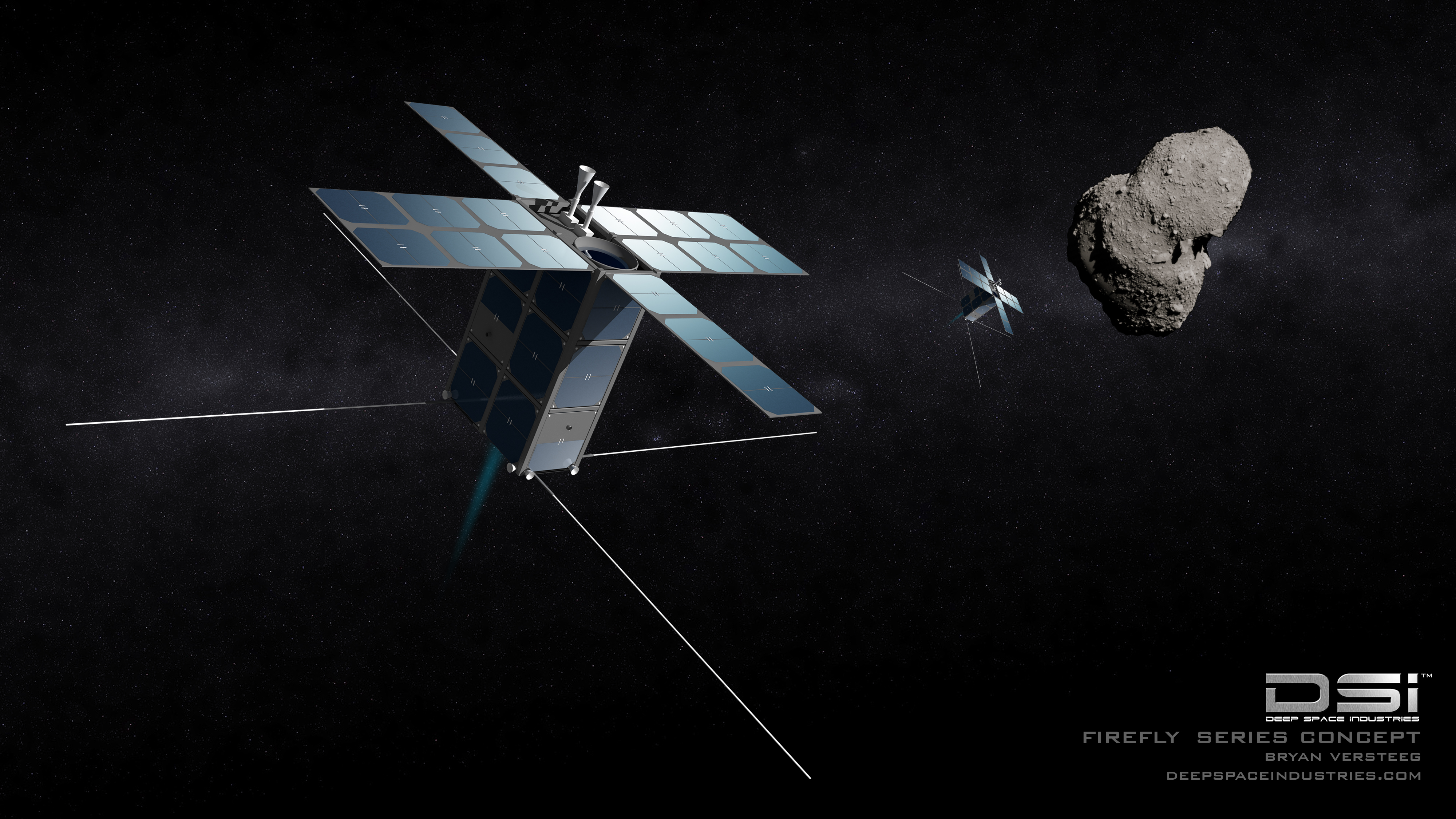| Online: | |
| Visits: | |
| Stories: |
Asteroid Mining: Not as Crazy as it Sounds
Discussions concerning all matters of humanity’s ascension into a higher dimensional existence culminating in 2012
 |
| Concept model of the FireFly Design (Image credit: Deep Space Industries / Bryan Versteeg. |
Excerpt from geologyforinvestors.com
At first glance it sounds ridiculous. Why would anyone consider mining in space when even the largest Earth-based mining operations seem to have trouble managing costs? After all, mid-grade and marginal deposits seem to have trouble finding any money and the process of moving a project from prospect to mine can take decades and cost hundreds of million of dollars. I’ll be the first to admit that the whole idea of asteroid mining was initially right up there with Star Trek-style transporters and desktop cold fusion, but a few recent events have piqued my curiosity on the subject. Allow me to elaborate.
First, one of the many items that was lost back in October, 2014 when the Antares rocket was destroyed was the Arkyd 3 satellite. Arkyd 3 is a testing platform designed by Planetary Resources, otherwise known as “the asteroid mining company”. Apparently these guys aren’t just doing interviews: There is actual work going on here. A re-built Arkyd 3 is scheduled for launch in about 9 months.
Second, the recent landing of the Philae spacecraft on comet 67P stirred all of our imaginations in a way that was reminiscent of the moon landing, first shuttle launch or first Mars rover. If we can effectively land a bullet on a bullet 500 million miles away from Earth, then the idea of grabbing a near-earth asteroid doesn’t sound nearly as crazy. The economics might still seem crazy, but the technology – not so much.
As it turns out, there are three groups currently working on a long term strategy to gather resources from space. Two are private companies and the third is NASA. All have different approaches, but their end games are largely the same.
What Asteroids? What Resources?Asteroid miners are seeking out near-earth asteroids. There are over 11,000 known near-earth asteroids which are considered to be left-overs from the formation of the solar system. These bodies can be composed of ice, silicate minerals, carbonaceous minerals and metals.
Ice or water on these bodies is one of the most significant potential resources. Solar panels on spacecraft can provide the power to simply convert water to hydrogen and oxygen for fuel. Considering that it costs from $5,000-25,000+ per kg to ferry items into space, the idea of harvesting resources needed in space doesn’t sound like such a bad idea. In fact, the groups involved are primarily focused on gathering the resources needed for space exploration and development. Gathering resources to send back to earth is a much longer term goal and arguably may never be economic.
Groups InvolvedCurrently there are two private companies pursuing asteroid mining; Planetary Resources and Deep Space Industries. NASA is also involved on several levels and has awarded contracts to several companies including both Planetary Resources and Deep Space Industries for studies relating to relating to asteroid redirection.
Deep Space Industries – Fire Fly/DragonFly/HarvestorDeep Space Industries’ approach includes a series of compact spacecraft known as FireFlies (not to be confused with NASA’s FireFly Cubesat). The company plans to send them on one-way missions to gather information such as size, shape, density and composition of asteroids of interest. Their longer term plan includes the development of a spacecraft known as the “Dragonfly” which will capture asteroids to return for analysis and to test processing methods and the “Harvestors” which will collect material for return to Earth’s orbit. The Harvestor class is meant for full-scale production for initial customers in space from collecting propellant for future space missions, manufacturing materials using extracted metals and radiation shielding. If costs begin to decrease over time they hope to be able to return these extracted commodities back to earth. DSI recently made the news when it partnered with another firm to build Bitcoin satellites as part of a proposed Bitcoin orbital satellite network.
NASANASA has commissioned a number of studies on the potential for asteroid mining and interactions as part of it’s Early Stage Innovation and Innovative Advanced Concepts (NIAC) directives. The Robotic Asteroid Prospector study determined that water and possibly Platinum Group Metals had the most economic potential for asteroid mining operations and presented some preliminary designed for water extraction.
NASA’s OSIRIS REx spacecraft is designed study the the near-Earth “Bennu” asteroid for more than a year with the primary goal of landing on the asteroid and retrieving a sample for return to Earth. OSIRIS-REx is scheduled for launch in September 2016.
NASA has been also been studying robotic mining for several years and holds annual competition where university students can build a mining robot. http://ascensionearth2012.blogspot.com
Source: http://www.ascensionearth2012.org/2014/11/asteroid-mining-not-as-crazy-as-it.html




